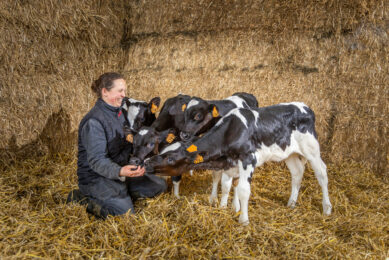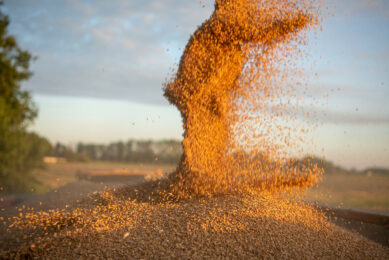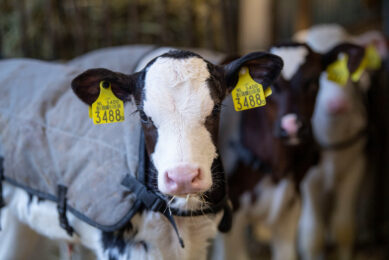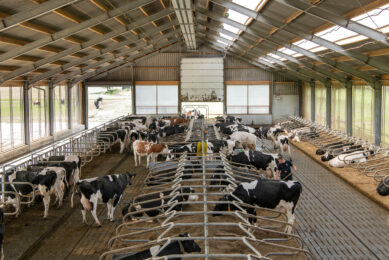Calf ranches – why business is booming in the US
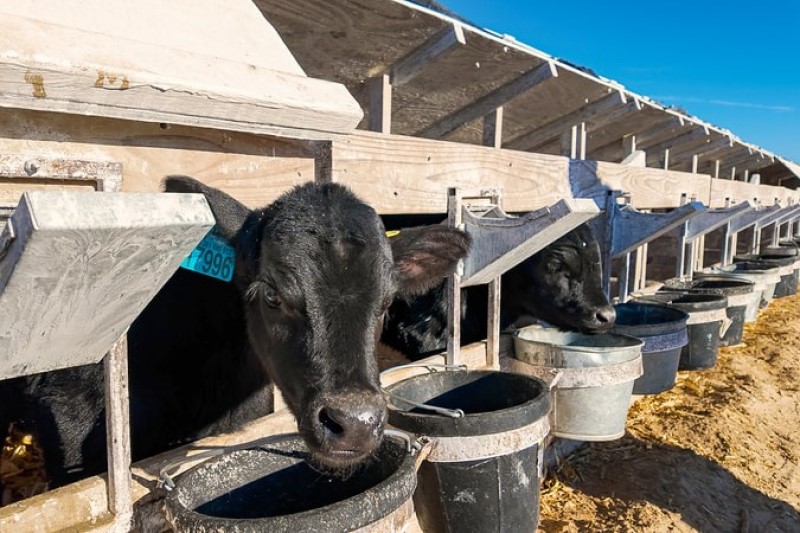
About 15 years ago, a new business model began to emerge in the US dairy industry. The concept of ‘calf ranches’ and ‘springer ranches’ was introduced, and for many reasons, the concept has grown into a booming success. It’s both economical and convenient, especially as dairy farms have grown to huge sizes across many US states.
A ‘calf ranch’ picks up calves when they are just a day old from dairy farms and transports them to a ranch where they are kept in hutches. When the calves are about 3 months old they are moved to corrals, and when they reach a weight of about 400-450 pounds (180-200 kg, around 5-and-a-half months), individual female dairy calves are taken back to their original dairy farm as heifers to be bred, joining the milking herd.
At a ‘springer ranch’, female calves are picked up, raised and inseminated according to the desires of their dairy farmer until they are about 2 months away from giving birth when they are returned to their original dairy farm. At this stage, they’re known in the US as springers, hence the term.
Some calf ranches also ship heifers to ‘springer yards’ (also called ‘background yards’) where cows are bred according to the dairy farmer’s wishes and then shipped back to the original farm as springers.
Of course, all these operations provide extremely good cow care. The concept of outsourcing calf raising wouldn’t work without very healthy heifers and springers being returned to dairy farms.
Usually, calf ranches also pick up and raise Angus-Holstein cross calves (males but also some females) for eventual beef slaughter. They either buy them outright from the dairy farmer or raise them on the farmer’s behalf, sending them at a given weight to a feedlot for finishing. In the US, the market for these crossed calves is currently very good, notes Kolton Kreitel, general manager at Fullmer Cattle Company, a calf ranch in Syracuse, Kansas.
Lay of the land
Quite a few of these operations are located in mid-West states where it is not very humid in the summer and where the winter weather is mild and relatively dry, which is good for the health of calves and young cows. “There are about a dozen calf and springer ranches in this area of western Kansas,” says Kreitel. “There are also some in other southern states such as California and in the Texas Panhandle.” It makes sense to have them in different areas, he says, because that keeps transport hours lower.
However, there is so much demand for this service that Fullmer Cattle Company picks up and delivers calves from 25 states (but mostly Kansas, Colorado, Iowa, South Dakota, Minnesota, Nebraska, Missouri and Utah).
Kreitel notes that the number of springer yards has grown, particularly as the size of US dairy farms has increased. “Dairy farmers only want to do the milking,” he explains. “The smaller farms can do everything – breeding and raising calves – but if you’re milking thousands of cows, you pretty much need a separate operation. In Kansas, for example, there are about 12 dairy farms with 5,000-8,000 head, and they get even bigger in the southern states. There, most farms have about 10,000 head.”
Fullmer has about 80,000 calves on its site, half in hutches and half in corrals. Kreitel says he knows of about 5 ranches in Kansas and 5 in California in the category with 50,000 or more calves. Of those, 2 or 3 are similar in size to Fullmer.
High demand, explosive growth
Fullmer Cattle in Syracuse was established in 2007 by owner Que Fullmer. Initially, there was only capacity for about 600 calves. A few years later, in 2010, Que and his son Ty started building the business by approaching dairy farmers to discuss the benefits of raising their calves off-site. By 2017, the business had grown to 25,000 calves and has expanded to its present size in the years since.
“We started by raising mostly female dairy calves, Holsteins and Jerseys, and now it’s almost all Holstein or Holstein-Jersey crosses,” says Kreitel. “Because genetics have boosted the fat content of Holstein milk, and because they produce so much more milk, most Jersey dairies are going back to Holstein.”
But nowadays, the female dairy calf-to-heifer part of the business is only about 30%. The rest is Angus-Holstein cross calves for beef, both male and female. “The dairies don’t need as many heifers as they produce,” says Kreitel. “So, we pick up all calves, and there’s considerable demand for the beef cross calves.”
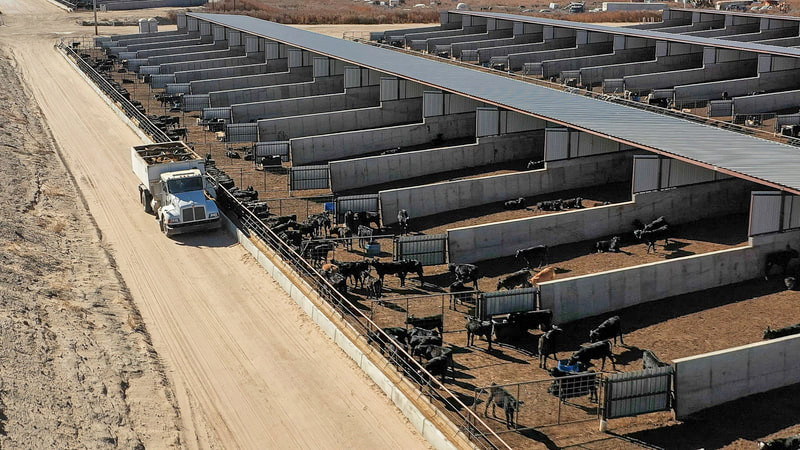
Calf health
Fullmer requires that calves have feed from the mother twice within the first 24 hours of life. Kreitel explains that if calves with good genetics receive these 2 feedings, they get sufficient colostrum to establish a strong immune system, provided the mother is in good health and producing good quality colostrum. On arrival, calves are given electrolytes and started on a proprietary blend of milk replacer and nutritive additives, and then slowly introduced to grain.
The drivers, who may visit the same large dairy farms in Kansas and beyond every day or several times a week, are careful to only pick up healthy calves. Those that show any signs of illness or weakness remain on the farm until they are healthy.
The trailers are cleaned and sanitised after each trip. Wood shavings are used for bedding. On arrival, calves remain in hutches for about 3 months, as moving them to corrals before that age has negative effects.
Custom vaccination
Diet consistency, as well as overall cleanliness with feeding, transportation and housing, are the key to success. The calves are tested frequently to monitor their health and to monitor if new strains of bacteria and viruses may be present on site.
“Our vaccination programme is the most important factor in our success with calf and heifer health,” says Kreitel. “We submit regular samples so we can monitor what is going on health-wise. Nutrition and cleanliness are critical, but you have to stay ahead of pathogens because once they take hold, it’s way too late.”
Based on test results, Fullmer Cattle Company works closely with Genova Labs to develop customised vaccines. Genova Labs was established 20 years ago as a collaboration between Que Fullmer and the founders of Genova Labs to address the specific challenges faced by calf ranches. These vaccines are overseen by Fullmer’s chief vet, Dr Tera Barnhardt, and are specifically for Fullmer Cattle only. The Fullmer autogenous vaccine programme includes a Mycoplasma bovis vaccine with several unique strains, a combination vaccine for Pasteurella multocida, Mannheimia haemolytica, Histophilus somni and Bibersteinia trehalosi. They also give a vaccine which includes multiple Salmonella serotypes, and help prevent pinkeye with a vaccine that includes multiple strains of both Moraxella bovis and Moraxella bovoculi.
The ranch also uses some commercial vaccines including the usual viral vaccines BVD, IBR, BRSV and PI3.
Future outlook
One current focus for Fullmer Cattle Company is growing the beef cross side of the business. “Demand for these calves is huge,” Kreitel explains. “Dairy crosses have always been part of the beef industry, but currently, about 20% of all slaughtered cattle in the US are beef-dairy crosses. That’s quite a large percentage. But we know the beef market will go down at some point and so we will always raise heifers as well.”
Fullmer only started raising beef-cross calves in 2017, but it wasn’t until 2021 that prices started to rise.
“This is partly due to reduced beef cattle numbers following droughts in recent years in several parts of the country, but it’s also because the genetics companies started addressing the issues,” says Kreitel. “Dairy farmers used to breed any Angus to their Holstein dams, but the bodies of those offspring were too long and too tall for the packers. So, the genetic companies have remedied that problem and dairy farmers have noticed.”
Their second focus is data. “Data is really important for everyone because that’s the way to improve your operation and improve the industry,” says Kreitel. “Our dairy farmers share their genetics and cow health data with us and we further track health and growth rate data for those calves. That’s very valuable for the feedlots and the packers and also for the genetics companies.”
This traceability data is also important for retailers, restaurants as well as for consumers. “It’s a very positive thing to have all the data on a cow from its genetic line and the health of its mother all the way through to retail,” Kreitel explains. “The data is valuable to all parts of the supply chain and I think it will be required in future, so we have the opportunity for a head start here.”
Join 13,000+ subscribers
Subscribe to our newsletter to stay updated about all the need-to-know content in the dairy sector, two times a week.



